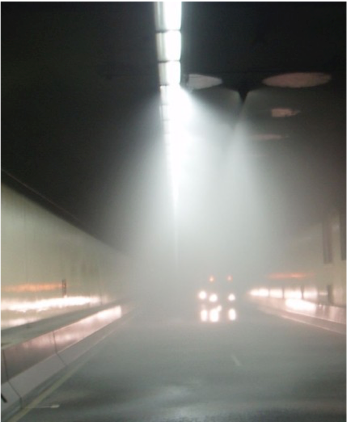
Road Tunnels Manual

Road Tunnels Manual
 The Technical Report 2016 R03EN "Fixed fire fighting systems in road tunnels: Current practices and recommendations" summarises the World Road Association's views on Fixed Fire Fighting Systems (FFFS), and its recommendations pertaining to the applicability, selection and operation of such systems.
The Technical Report 2016 R03EN "Fixed fire fighting systems in road tunnels: Current practices and recommendations" summarises the World Road Association's views on Fixed Fire Fighting Systems (FFFS), and its recommendations pertaining to the applicability, selection and operation of such systems.
In a rapidly developing fire, smoke can quickly compromise the ability of users to self-rescue, while rapidly elevating temperatures can make the tunnel untenable and destroy safety systems. An FFFS has the potential to reduce the rates of fire growth and spread, thereby assisting the safety of motorists and the emergency services during the self-rescue and assisted-rescue phases of a fire. Other potential benefits of an FFFS are the protection of the tunnel assets from fire damage, and the avoidance or reduction of road network disruptions that may occur while a tunnel is being repaired following a fire incident.
Water-based deluge systems are by far the most common type of FFFS installed in tunnels at present. Both low-pressure and high-pressure systems are available, with the latter having smaller droplet sizes. Other water-based systems, including foam systems, have also been installed in tunnels. The selection of the appropriate FFFS should be based on cost-benefit analysis.
Except where the installation of an FFFS is prescribed by a country's tunnel design guidelines, the following steps are recommended to support the decision as to whether such a system should be installed:
FFFS must be considered in the context of other critical safety systems such as ventilation. Rapid and accurate incident detection and FFFS response are essential components to achieve the best possible FFFS performance.
Report 2016 R03 provides information about the types of systems available, their use in road tunnels in various countries and advice on the design and selection of appropriate FFFS. Where FFFS are adopted, it is essential that they are correctly designed, installed, integrated, commissioned, maintained, tested and operated.